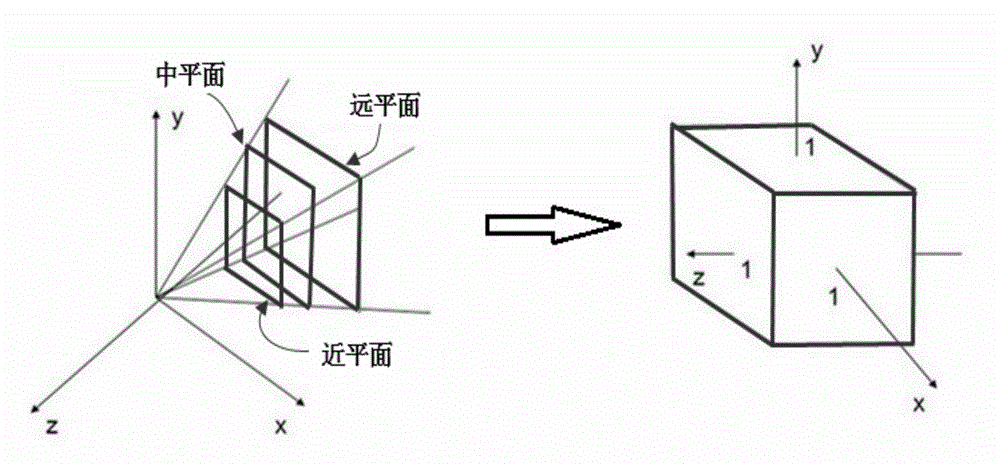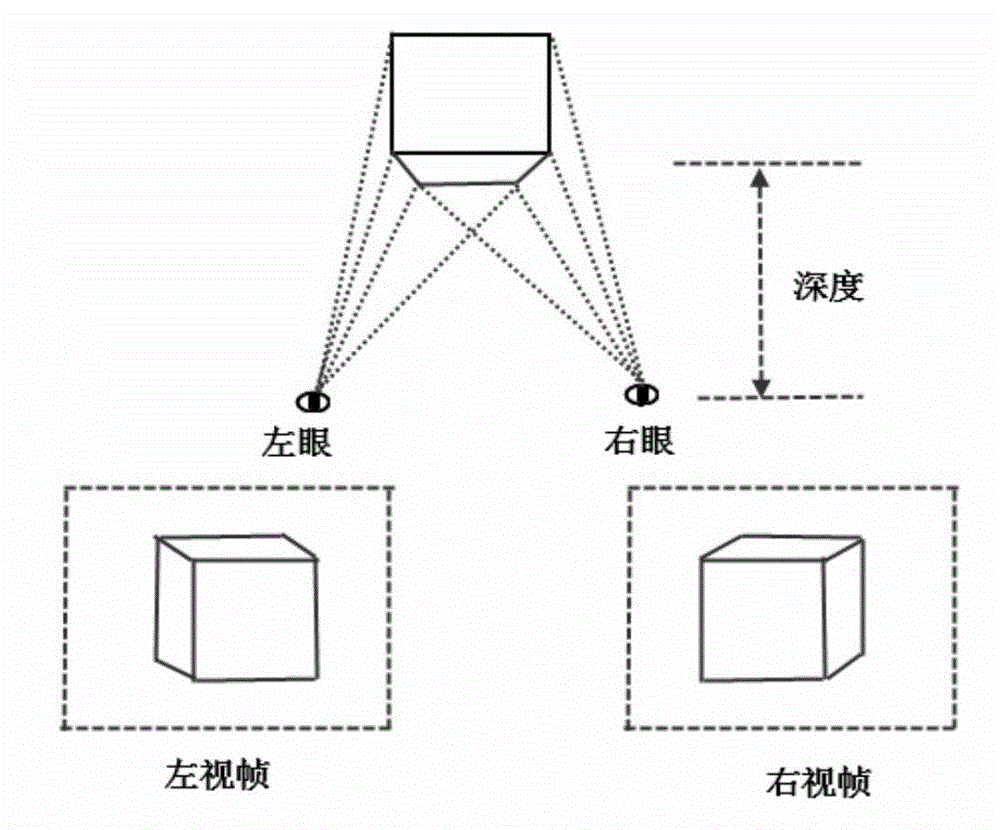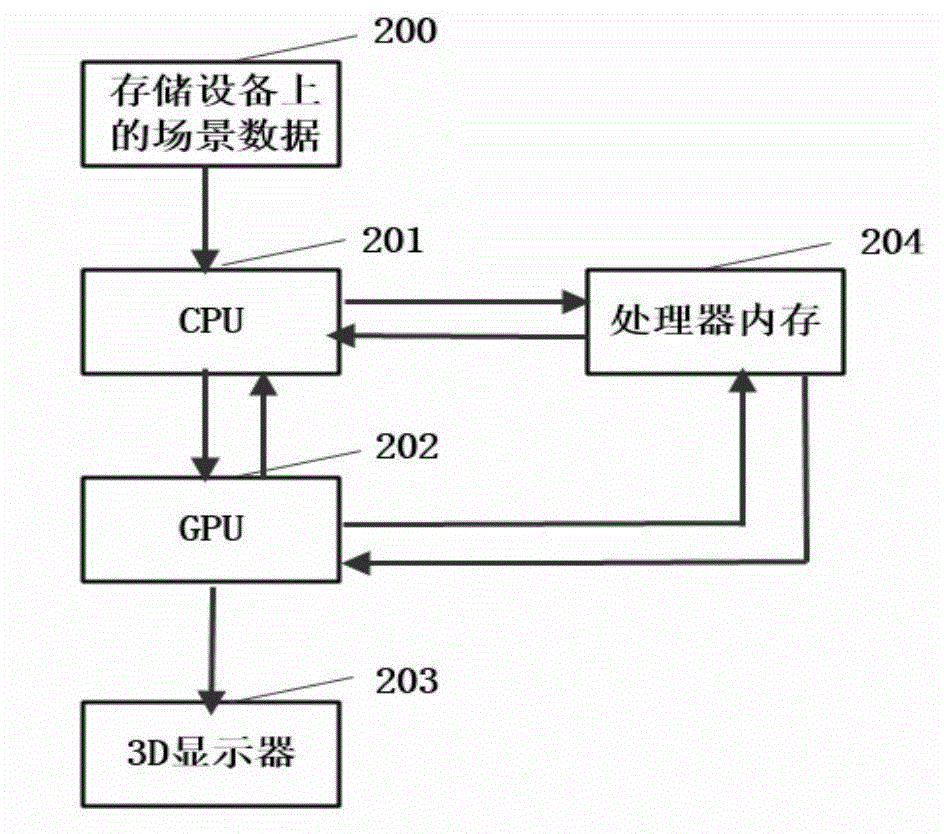Binocular three-dimensional graphic rendering method and related system
A three-dimensional graphics, dual-purpose technology, applied in image data processing, 3D image processing, resource allocation, etc.
- Summary
- Abstract
- Description
- Claims
- Application Information
AI Technical Summary
Problems solved by technology
Method used
Image
Examples
Embodiment 1
[0033] In order to enable the existing GPU rendering pipeline to render both in-screen and out-screen effects without requiring corresponding support on the GPU hardware, a middle plane is added to the binocular 3D graphics rendering method in this embodiment (middleplane), such as figure 1 As shown, the mid-plane is between the near plane and the far plane, and the mid-plane is regarded as a projection surface, and the primitives between the near plane and the far plane are projected onto the mid-plane, then the figure between the near plane and the mid-plane The primitives will have a three-dimensional effect of going out of the screen, and the primitives between the middle plane and the far plane will have a three-dimensional effect of entering the screen. In order to ensure that only the primitives between the near plane and the far plane are kept during the clipping phase, the pseudo-depth must remain unchanged, that is, between [-1,1].
[0034] Suppose the distances fro...
Embodiment 2
[0049] figure 2 It shows that the left and right eye views have different angles due to binocular parallax, and the buffers storing the left and right eye views are respectively the left view frame and the right view frame, and the objects in the left and right view frames are related to the depth of field.
[0050] This embodiment provides a binocular 3D graphics rendering and display system based on the principle of binocular parallax and the GPU rendering pipeline, such as image 3 Shown is a schematic structural diagram of the system, which includes five modules:
[0051] (1) External storage device 200: for storing scene data, such as 3D grid data, image data, configuration data, etc.;
[0052] (2) Processor (CPU) 201: used for analyzing files, processing scene data, and compositing operations of stereoscopic frames;
[0053] (3) GPU202: realize the main components of the graphics rendering pipeline, and generate left and right views;
[0054] (4) Processor memory 204: ...
Embodiment approach
[0060] According to an embodiment of the present invention, a stereoscopic image reproduction method is provided, including:
[0061] Creating step: creating at least two view frame buffers for respectively storing image data of different viewpoints;
[0062] Rendering step: receiving data containing three-dimensional graphics from at least two viewpoints, and rendering the data of each viewpoint, the rendering adopts the binocular three-dimensional graphics rendering method of Embodiment 1, and stores the rendering result in the corresponding view frame buffer ;
[0063] Synthesizing step: synthesizing the rendering results in at least two viewing frame buffers to obtain a stereoscopic frame, and outputting the stereoscopic frame.
[0064] Take the two viewpoints of left viewpoint and right viewpoint as an example, such as Figure 5 As shown, the stereoscopic image reproduction method of this embodiment. First read the attribute information of the 3D display, including inf...
PUM
 Login to View More
Login to View More Abstract
Description
Claims
Application Information
 Login to View More
Login to View More - R&D
- Intellectual Property
- Life Sciences
- Materials
- Tech Scout
- Unparalleled Data Quality
- Higher Quality Content
- 60% Fewer Hallucinations
Browse by: Latest US Patents, China's latest patents, Technical Efficacy Thesaurus, Application Domain, Technology Topic, Popular Technical Reports.
© 2025 PatSnap. All rights reserved.Legal|Privacy policy|Modern Slavery Act Transparency Statement|Sitemap|About US| Contact US: help@patsnap.com



